Alongside the facelifted Tucson, the newly-formed Hyundai Motor Malaysia (HMY) is also previewing the new Santa Fe today. Not to be confused with the facelifted fourth-generation model launched only last September, the car you see here is the completely redesigned fifth-gen seven-seater SUV that brings with it a radically different styling and a suite of the latest technologies from the Korean carmaker.
The upshot of drastically cutting the lifecycle of the outgoing model short is that the new Santa Fe will arrive here less than two years after its world premiere which, while not short, is roughly half that of the four years it took the facelift to come.
And the change couldn’t be more drastic – while the current car has a fairly sleek (if rather homogenised) crossover shape, its successor is angular, more rugged and, dare I say it, more Land Rover-like. The company claims to have started the design from the rear first, with a large cargo hold and a wide, almost featureless tailgate providing a better place for “the enjoyment of the outdoors.”
The rest of the shape is said to be suited to both urban settings and the outdoors, with bluff surfaces, wraparound glasshouse design (which hides handles in the C-pillars, meant to aid roof access), minimal curves and that upright back.
The front, meanwhile, exudes plenty of road presence thanks to the tall bonnet and H-shaped elements in the headlights and the wide body-coloured bumper insert – a graphic that’s mirrored in the taillights. A short front overhang, hexagonal fender flares and available 21-inch alloy wheels, meanwhile, accentuate the long 2,815 mm wheelbase.
That wheelbase is 65 mm longer than before; in fact, the whole car is not that much bigger, despite what the looks suggest. At 4,830 mm long, 1,900 mm wide and 1,720 mm tall, the new Santa Fe is 45 mm longer, just as wide and 35 mm taller than the current car. Remember, however, that both cars share the same platform, which amazingly was introduced midway through the fourth-gen’s lifecycle.
The interior on the show cars were kept hidden during today’s preview event, but we’ve already seen the cabin during the initial global reveal. If the exterior redesign belies the carryover architecture, the revamped interior only reinforces it. Here, the rectilinear theme continues but in a more luxurious direction, with clean surfacing, glossy materials and neat detailing drawing even more parallels to Solihull. Again, there are H-shaped elements here, in the full-width air vent design.
Above the vents sits a curved widescreen display panel that houses the twin 12.3-inch instrument and infotainment displays, while the passenger gets dual gloveboxes; on higher-end models, the upper compartment comes with UV sterilisation. The group’s widespread use of capacitive touch buttons for the air-con (unfortunately) remain, but the Santa Fe at least has physical temperature knobs.
Centre console storage has also been rethought thanks to the gear selector moving to the steering column, Ioniq-style – there are now dual Qi wireless charging pads and armrest storage that opens from both the front and the back, the latter said to be a world first. Another feature borrowed from the Ioniq 5 and 6 is the one-touch reclining front passenger Relaxation Seat with a built-in leg rest.
Moving rearwards, the increased dimensions have freed up more legroom and, in particular, headroom in the second and third rows in response to consumer feedback. The third-row seats, which are claimed to offer class-leading space, also recline ten degrees more than before, while access continues to be aided by a second-row one-touch tilt-and-slide function.
Both rearmost rows can be folded completely flat to create a “terrace-like” space for people to lounge around with the big tailgate open. Boot space is 628 litres with the third row folded and 1,949 litres with the second-row seats also flattened. Other useful features include a digital rear-view mirror, a 12-inch head-up display and plenty of USB-C ports dotted throughout the cabin, rated at up to 27 watts.
Safety-wise, the Santa Fe can be had with a whole host of driver assistance features, including second-generation autonomous emergency braking with oncoming vehicle detection and evasive steering assist, adaptive cruise control with stop and go, lane centring assist, blind spot monitoring with collision prevention, front and rear cross traffic alert with auto brake, a door opening warning and a rear seat reminder. Key-operated remote park assist and up to ten airbags are also available.
Under the bonnet, the new Santa Fe will carry over the outgoing model’s hybrid powertrain, centred around a 1.6 litre turbocharged and direct-injected (T-GDi) Smartstream four-cylinder petrol engine making 180 PS at 5,500 and 265 Nm of torque from 1,500 to 4,500 rpm. This is paired with a 65 PS/264 Nm electric motor and a six-speed automatic transmission for a total system output of 235 PS and 367 Nm (increases of 5 PS and 17 Nm over the old car, the same figures as in Australia), sent to the front wheels.
Also available will be a new 2.5 litre T-GDi mill that serves up 281 PS at 5,800 rpm and 422 Nm between 1,700 and 4,000 rpm, mated to an eight-speed dual-clutch transmission and Hyundai’s HTRAC all-wheel drive. No diesel option this time around, as is the case elsewhere in the world.
Three trim levels correspond with the powertrains offered, with Hybrid Prime and Prestige variants set apart through 20-inch five-spoke two-tone alloy wheels and, on the Prestige at least, silver exterior trim. The 2.5 T-GDi version, meanwhile, will be sold in range-topping Calligraphy spec with black trim and the aforementioned 21-inch black multi-spoke rollers and C-pillar handles.
In a surprising announcement, the Santa Fe is set to be launched just next week, July 2, in CBU fully-imported form first. Production of the CKD locally-assembled model at the Inokom factory in Kulim, Kedah is scheduled to kick off in the third quarter of the year as part of a RM2.16 billion investment.
The new HMY entity is set to take over the distributorship of the Hyundai brand from Hyundai-Sime Darby Motors, which will now become one of the dealers. The company says it plans to roll out key improvements across its service network, expanding to 25 outlets by 2030.
GALLERY: 2025 Hyundai Santa Fe Hybrid in Malaysia
GALLERY: 2025 Hyundai Santa Fe 2.5T HTRAC Calligraphy in Malaysia
GALLERY: 2025 Hyundai Santa Fe official photos
Looking to sell your car? Sell it with Carro.











































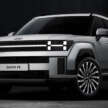
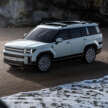
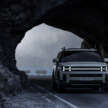
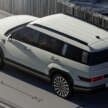
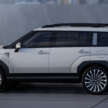
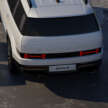
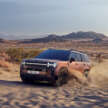
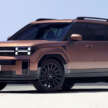
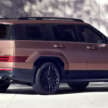
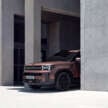
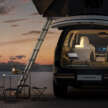
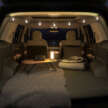
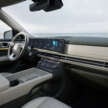
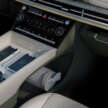





what the heck is the back?!
Fiat Multipla but surprise at the backside
Saw a couple in AU, looks like sh** from the rear.
Realised most boxy designs here will succeed as well as the X90 did
why do they screw up a good thing with a back like that!! old korean design is back!
Bagus. Sime darby teruk.
Finally Hyundai agree to bring their real flagship model to Malaysia, hopefully we also can get the high tech as other countries. Not like the Sime Darby only given the kosong spec with luxury price.
honestly this is one very fugly SUV. what the heck is the back???
Santa Fe is plagiarized Kia Carnival and made it uglier indeed
love the front, not so much the back. interior looks great though.
with all things Hyundai, the photos sometimes look weird but on the road they actually stand out from the crowd.
I heard Santa Fe is Santa Claus’s brother from another mother.
Why hyundai make the ugliest back design ever?? Ive seen this car and damn it is sooo fugly
this shows asian monkey like you prefer curvy design like vios
Buddy I will CRASH OUT if I see this in our roads
I was “Wow” for the front,, but the rear… a giant classic Suzuki Swift ???
LOL the facelifted previous-gen Santa Fe hasn’t even begun warming the seats yet and the replacement is here, under a different entity. No wonder the showroom units are being sold for almost RM50k off by Sime Darby.
But this new model’s rear is puke-inducing. It’s just an angular version of the old Ssangyong Stavic’s hideous rear.
The rear looks like a “H”earse
Super ugly back. Reminded me of old school estima